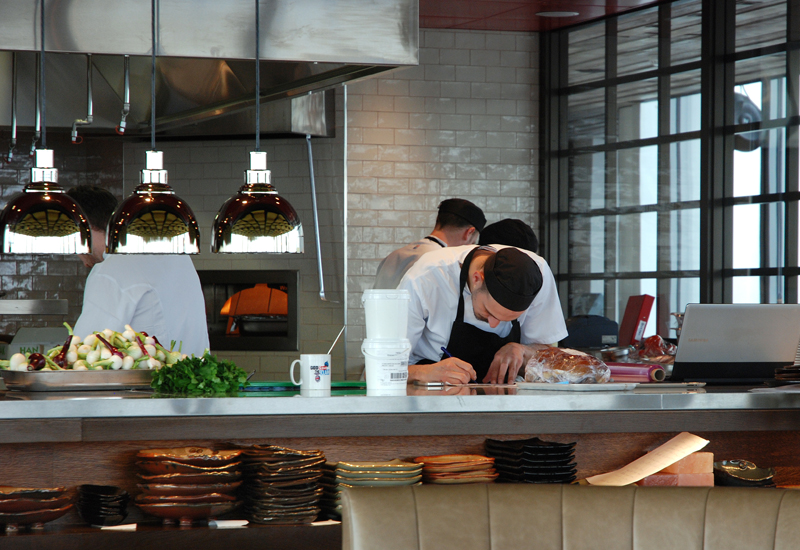The restaurant environment is a busy place that requires flexibility and efficiency in order to ensure a smooth operation and good service delivery to the customers. Crosstraining employees is one of the strategies that most restaurant managers use to achieve success. Cross training refers to educating the employees on how to play different positions in the restaurant so that they can carry out different duties instead of performing their roles only. Such a practice may result in a more flexible workforce, cheaper labor, and better performance of a restaurant and its organization as a whole. In this paper, we consider the benefits of cross-training and the benefits it can have to your restaurant business.
Improved Flexibility and Adaptability
The varied personnel in offices and restaurants can be much better, as a result of cross training of the restaurant workers. An employee with knowledge of more than one role is at a position to substitute a co-employee in case of a rush or sudden sickness without bringing inconvenience. This flexibility makes the restaurant run smoothly despite the lack of enough hands in every area in the restaurant. To illustrate, a waiter who has acquired skills on how to work in the kitchen or a chef who has the experience of working in the front-of-the-house can be used to stabilize the service delivery at peak periods or when other employees are unavailable.
In addition, such flexibility enables managers to plan the shifts in a more efficient way, realizing that they can assign different positions to different employees when it is required. It even minimizes chances of burnout as on the job, work may be shared and employees do not get used to the job. By having a flexible workforce, restaurants will be more able to react to the unstable dynamics of the business making it more resilient and predictable.
Enhanced Team Collaboration and Morale
In carrying out cross training on the staff members, the understanding of the problems and duties of other staff also increases, especially when they have been trained in other roles. Such realization will increase the level of empathy and collaboration between team members and ultimately provide a better level of communication and collaboration. Chances are that employees support one another and this leads to a good working environment and teamwork.
Cross-training is equally a boost to workers as they also acquire new information and areas of expertise. This can raise job satisfaction and motivation because staff will feel they are more important and have a stake in the success of the restaurant. An inspired workforce usually means improved service to the customers and this will eventually give the restaurant a positive reputation and increase profits.
Integration with Technology and Systems
Cloud based POS is in use in many modern restaurants, because this type of system is flexible, it can be accessed in any number of locations and using any number of devices. Employees who are cross trained and are aware of this type of technology would help in improving the inventory management, sales tracking and reporting. This helps them use such systems in a number of ways, ensuring consistency and making operations less dependent on certain individuals, making them stable.
The usage of technology in the restaurant is also boosted by training workers to engineer this with different workers. As an example, employees who have been trained to work on various functions will be more prepared when it comes to operating the restaurant POS system and fixing any problems at the moment. This skill will help orders to be processed promptly and correctly making the experience of the customer and work of the enterprise better.
Cost Efficiency and Operational Benefits
Restaurants can reduce money through cross-training with a good labor cost. Managers can engage fewer but trained personnel to do more than one job and this allows managers to economize by avoiding employing more people to cover each and every position. This will contribute to a drop in unnecessary employment and spend little on payrolls as the service levels remain high.
Furthermore, it can take less time to train new employees in case they have workers who are already experienced in multiple positions. Training will be more effective with the help of experienced staff that can guide and mentor new people, and make it an effective procedure. This will also reduce the chances of any mistake that might occur through inexperienced workers, and daily operations would be run smoothly. Investigating cross-training, restaurants can achieve maximum utilization of their workforce by preventing disruptions in operation.
Training the restaurant employees to be cross-functional is a worthwhile investment that can provide a wide variety of benefits, including increased flexibility, better collaboration, and cost decrease and proper utilization of technology. Investing in the development of a variety of skills of the workers, a restaurant manager will be able to develop a strong and versatile workforce that will be able to address the challenges of the hospitality sector, which is dynamic in its character. Cross-training also helps in the overall smooth running, better work satisfaction, and dining experience to the customers of the restaurant, hence a strategy that should be implemented at any restaurant that seeks to achieve its long term aspirations.

